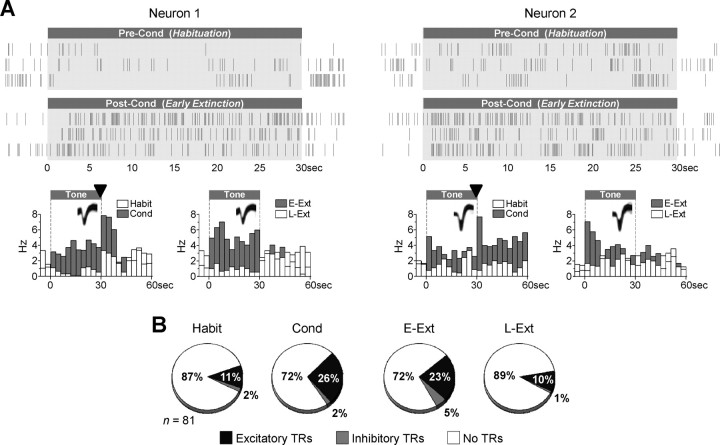Figure 2.
Prelimbic neurons showed sustained excitatory responses to conditioned tones. A, Spike trains of two representative neurons before conditioning and after fear conditioning. Perievent time histograms show the response of these two neurons to tones across different phases of the experiment (bin width, 3 s). These neurons responded to tones in a sustained manner during high-fear states (conditioning and early extinction) and stopped responding to tones by the end of the extinction session (late extinction). These neurons also responded to footshocks (▾) during the conditioning phase. B, Pie charts illustrate the percentage of PL neurons showing excitatory or inhibitory tone responses (TRs; see Materials and Methods for criteria used to detect tone responses). The proportion of neurons showing excitatory tone responses significantly increased from habituation to conditioning and decreased from early extinction to late extinction (χ2 test, p's < 0.05). A small proportion of neurons showed inhibitory tone responses, which did not change significantly with conditioning or extinction training (p's > 0.27). In this and subsequent figures, E-Ext indicates early extinction, and L-Ext indicates late extinction.

